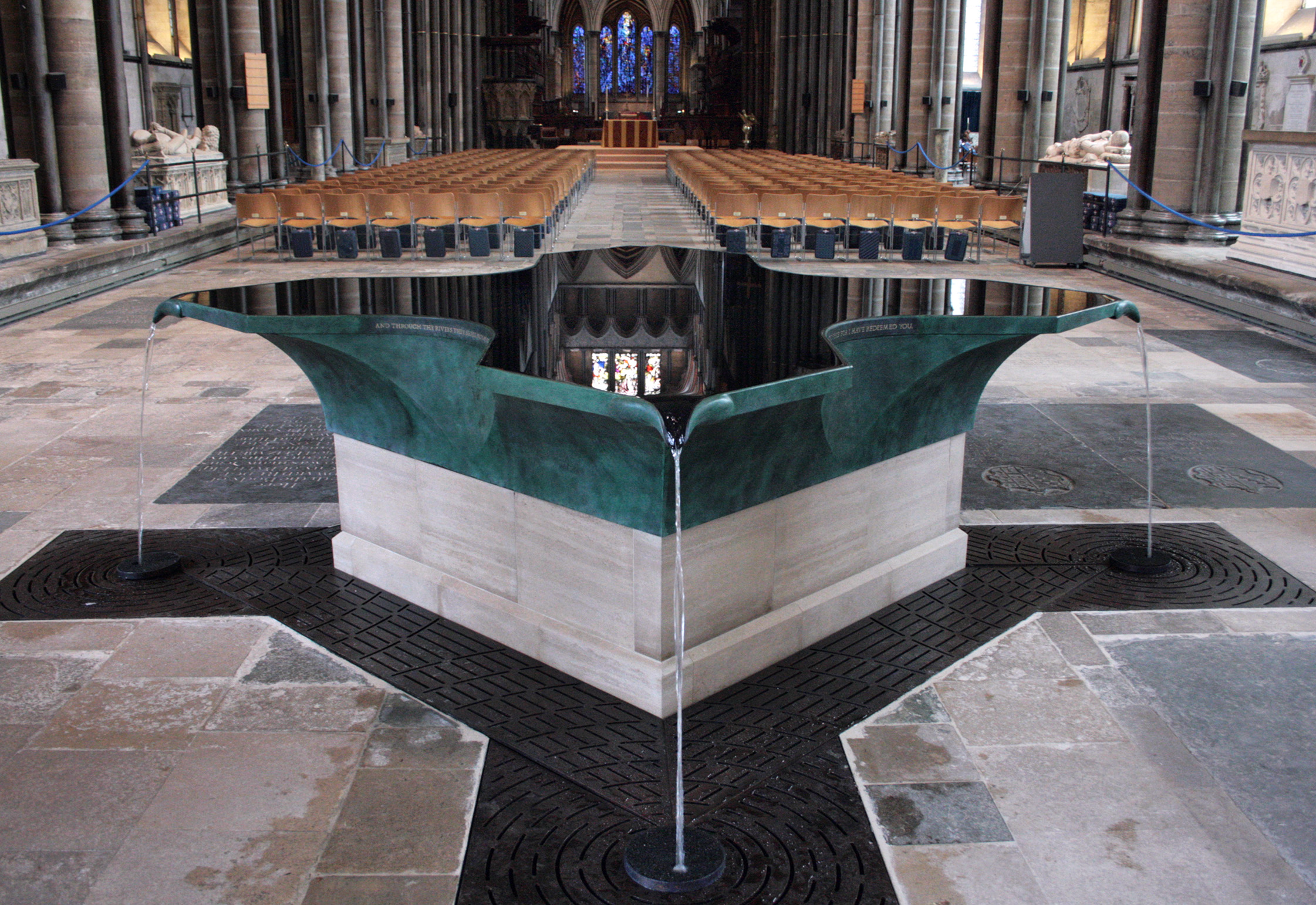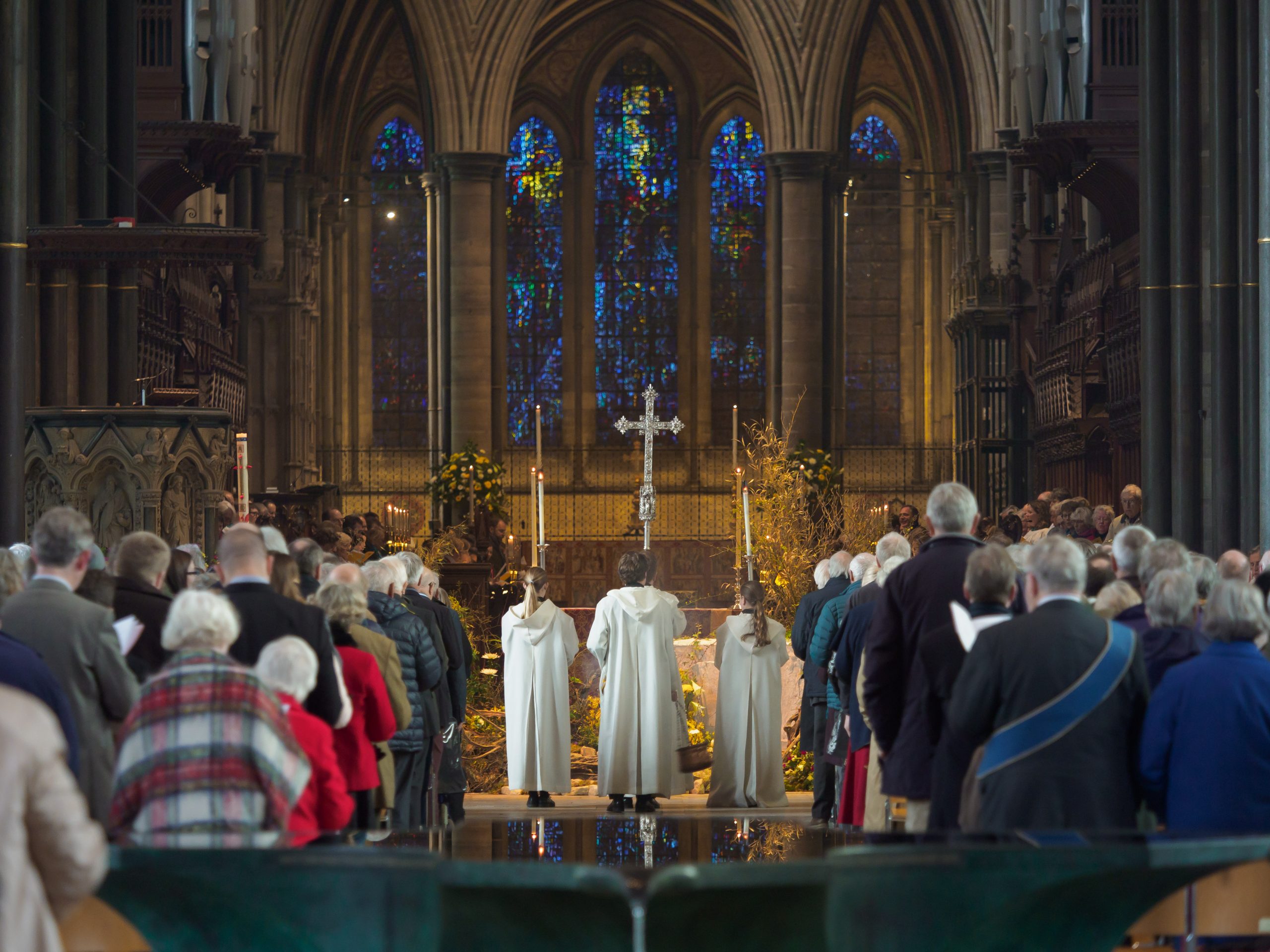The Dead of Hierapolis

The Dead of Hierapolis: a sermon for the Feast of Philip and James May
1st 2023 by Kenneth Padley
Hierapolis is a World Heritage Site in western Turkey. Tourists flock to see its travertines, ledges of white limestone that coruscate down the hillside. Above the travertines nestle the well-preserved ruins of an ancient city and elaborate graveyard. With over 1200 extant burials, the necropolis of Hierapolis is among the largest from the Greco-Roman era.
I’d like to introduce you tonight to two occupants of the Hierapolis necropolis. They were contemporaries in the late first century, but we do not know whether they ever met one another. Either way, their parallel lives shed light onto today’s festival.
I’m going to take you first to the tomb of a rich man, a merchant by the name of Flavius Zeuxis. The plaque above the finely-carved doorway records his deeds. It boasts in particular about how Flavius sailed around the Cape of Malea, the dangerous tip of the Peloponnesian peninsula, 72 times. Flavius had made his wealth in the course of these 36 trading voyages between Hierapolis and Italy. Again and again, in an age of wooden ships and without modern equipment, Flavius successfully navigated the dangers of the Mediterranean Sea.
The funerary plaque of Flavius offers a remarkable insight into the sophistication of travel within the Roman Empire and, in particular, the role played by the Mediterranean at the heart of a busy transport network. The Mediterranean was literally the centre of the known world. It was the information superhighway of its day.
Let’s bid farewell to Flavius and meander up the hillside to another tomb. Unlike Flavius, the occupant of this tomb was not a native of Hierapolis but had made the city his home having come there from hundreds of miles further east. His name was Philip. He did not come with merchandise but with bizarre ideas. Most notable among these was the notion that one of his compatriots, a carpenter by trade, was the Son of God and that he had defeated death despite a grisly execution at the hands of the Romans.
The tomb of Philip is an extraordinary discovery of recent archaeology. An early Christian martyrium, a shrine to his memory, was excavated decades ago. However, the actual tomb of Philip, adjacent to the later martyrium, was unearthed only in 2011.
Sadly for the purposes of this feast day, there is uncertainty about which of the two Philips in the New Testament is buried in Hierapolis. It might have been the disciple from Bethsaida whom we heard in tonight’s gospel in dialogue with Jesus. Or it might have been Philip the Deacon whom we are told in the Acts of the Apostles was an evangelist and father of four daughters blessed with the gift of prophecy. Both Philips did amazing things for Jesus, although for the avoidance of ambiguity, it is the first of these, Philip the Apostle, whom we are meant to be celebrating tonight.
If there is uncertainty in the historical record about the biographical details of Philip, the story of James who shares tonight’s festival is even less clear. The Jim to our Pip is listed among the disciples of Jesus as ‘Son of Alphaeus’. He is commonly called James the Less to distinguish him – unsurprisingly – from James the Great, the fisherman son of Zebedee whose shrine lies at the end of the vast Spanish pilgrimage routes in Santiago da Compostela. Tonight’s James may have been the first Bishop of Jerusalem who was executed
c.62AD and/or the author of the biblical Letter of James. On the other hand he might have been neither of these men, in which case he is ‘Less’ indeed because we know virtually nothing about him.
In one sense, such biographical details are immaterial because the lesson from the necropolis in Hierapolis is this. The first followers of Jesus were so fired up by his resurrection, the joy of this Easter season, that they got on that information superhighway and travelled huge distances at great personal cost to share the good news. They exhibited the curiosity shown by Philip the Apostle in tonight’s reading, yearning to know God as Father. They exhibited the bravery shown by Philip the Apostle at the beginning of John’s gospel when he led his friend Nathanael to join Jesus’ band of followers. They took risks, communicated clearly, broke down barriers, and built communities. Against all probability, the bizarre ideas which they took to advanced urban communities like Hierapolis caught on. Despite their obscurity, their example to us is indelible because we would not be here tonight without them.




